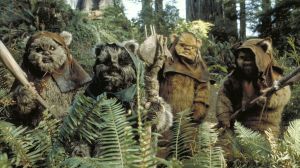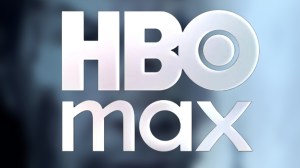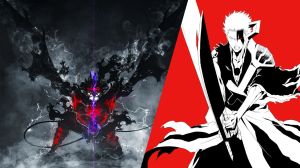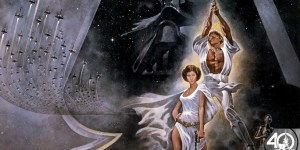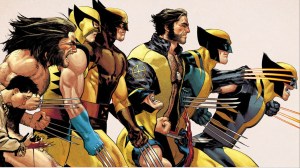In just a few short hours, Magic: the Gathering players will be congregating at their local game store to participate in the prerelease for the TCG’s next set—Outlaws of Thunder Junction. Taking players to an entirely new plane, Thunder Junction is rooted in classic Western storytelling, combining the trademark dark fantasy of Magic lore with cowboys, lassos, and a whole lot of yeehaws.
Videos by ComicBook.com
As with most Magic sets, Outlaws of Thunder Junction is introducing a handful of new mechanics to the game, which we’re covering here. If you want to show up to your prerelease event knowledge knowing exactly what’s going on, keep on scrollin’, partner.
Outlaws
The first mechanic playing into the Western theme of Thunder Junction is the Outlaw mechanic, perhaps the easiest-to-follow mechanic in the entire set. When cards call out “Outlaws” as a noun, it means a permanent creature with any of these types: Assassin, Mercenary, Pirate, Rogue, and Warlock.
In one example, the Rakish Crew card says that “Whenever an outlaw you control dies, each opponent loses 1 life and you gain 1 life.”
Committing a Crime
Then comes crimes. In Outlaws of Thunder Junction, players are able to commit crimes by casting spells or activating abilities that target an opponent, a spell or ability an opponent controls, a permanent an opponent controls, or a card in an opponent’s graveyard.
In short, “committing a crime” covers a whole lot of ground but each card that uses it should call out what to do perfectly. Looking at the Gisa, the Hellraiser card it reads, “Whenever you commit a crime, create two tapped 2/2 blue and black Zombie Rogue creature tokens. This ability triggers only once each turn. (Targeting opponents, anything they control, and/or cards in their graveyards is a crime.)”
Spree
Players can go on Sprees using Outlaws of Thunder Junction cards that, in a sense, act similarly to Planeswalker cards—somewhat. There’s the card’s base mana cost, but activates additional abilities the more mana you pay to cast.
Using the Final Showdown card, you pay one White mana and the mana call out to activate one of the card’s abilities. You can play one additional colorless mana to activate an ability that says, “All creatures lose all abilities until end of turn,” or an ability that allows you to give one of your creatures Indestructible until the end of the turn.
Final Showdown has a third ability if you pay two additional White mana and three colorless. If you pay the total of six mana, you’re able to “Destroy all creatures” on the battlefield.
Mounts and Saddle
A Western-themed release wouldn’t be the same without Mounts and Saddles, a creature and mechanic new to Outlaws of Thunder Junction.
“Saddle is an activated ability that you activate as a sorcery—meaning during your main phase while the stack is empty—by tapping any number of untapped creatures you control other than the Mount with saddle with total power N or more, where N is the number included in the saddle keyword,” Wizards says of the new mechanics.
It adds, “As the saddle ability resolves, the Mount becomes saddled until end of turn. This doesn’t inherently mean anything, but another ability on the card will somehow refer to the Mount being saddled. Many Mounts have simple triggered abilities like the one Trained Arynx has—these trigger whenever the Mount attacks while saddled. But some Mounts give you a little more bang for your bucking bronco. Our old friend The Gitrog doesn’t treat its riders too kindly, but you’ll be in prime position to benefit.”
Plot
Plotting, believe it or not, is essentially playing the long game. The mechanic allows you to pay a certain amount to “Plot” the card, which exiles it. Players can then cast the card from exile later in the game with no mana needed.
“Plot is a fantastic way to set up future turns, knowing that your spell is available for no further mana investment. To take full advantage of Plan the Heist, you’d prefer to have an empty hand as it resolves,” Wizards says. “Or maybe you’re still searching for a second source of blue mana. No matter your reasons, plotting the card sets you up for a potent turn in the future.”
Commander Minigame: Bounties

Include in the Commander precons for Outlaws of Thunder Junction are Bounties, a new version of tokens that add another objective to the social format of the game. In short, should you choose to use Bounties in your game, all players in your Commander pod use the same deck of bounties, a deck that can include anywhere from six to 12 of the cards.
Starting on each player’s third turn, they may choose to activate a Bounty. They then try to complete the objective on that bounty and if they’re successful, they can claim a reward off the correlating chart.
The Bounty: Lyssa, Sterling Collector reads, “At the beginning of your end step, if the player with the most cards in hand or tied for most cards as the turn began was dealt combat damage this turn, collect or reward.”
“At the beginning of your end step, if you cast a spell from anywhere other than your hand this turn, collect your reward,” the bounty titled The Outside says.

